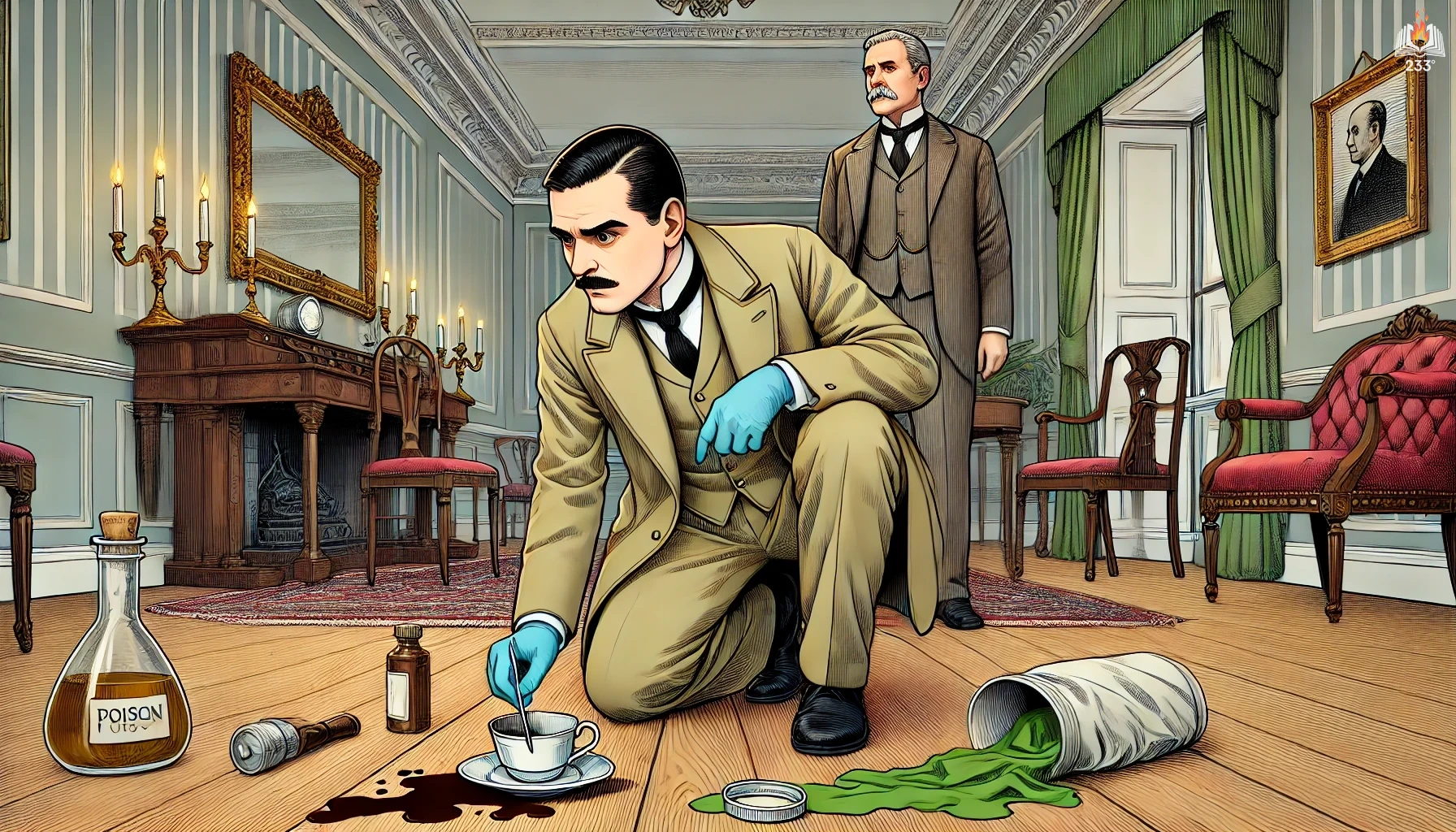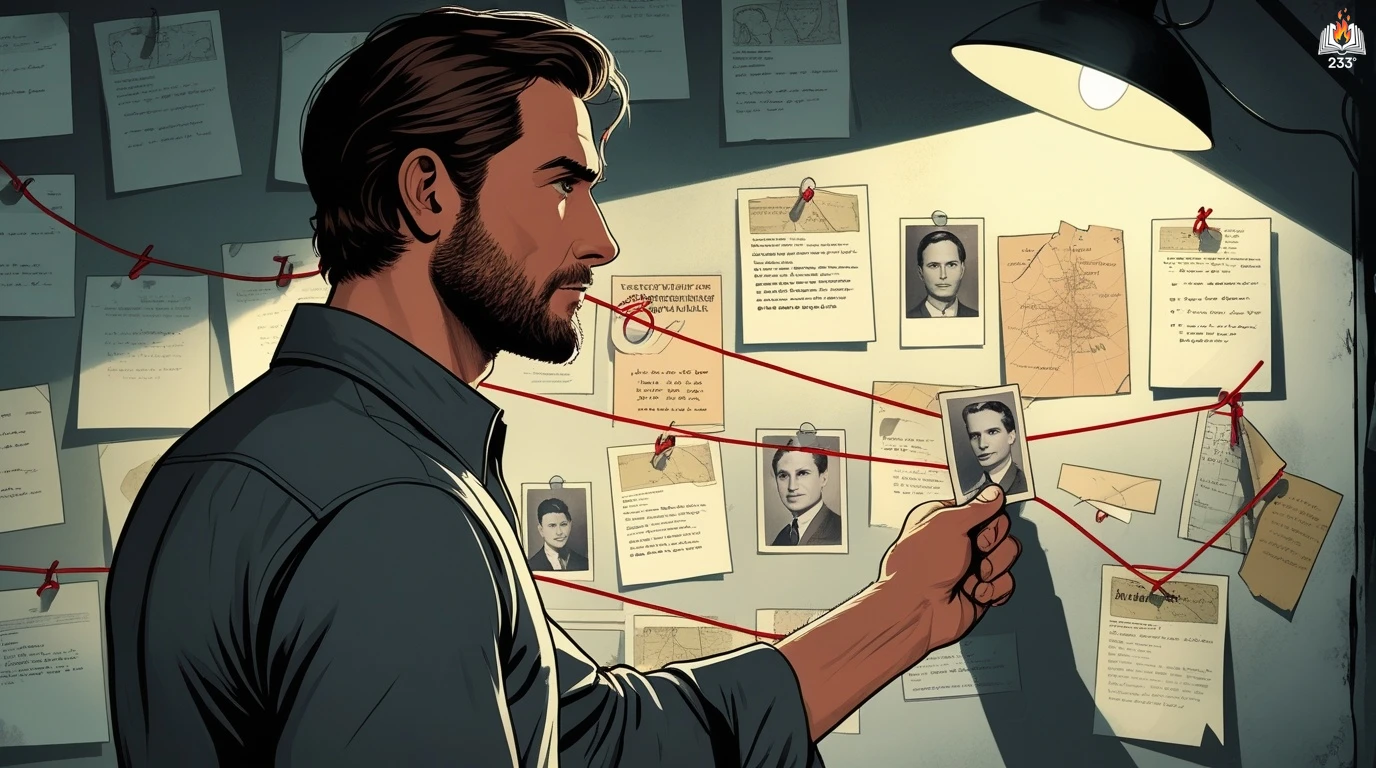Lord Edgware Dies by Agatha Christie, published in 1933, is part of her iconic Hercule Poirot series and is widely regarded as one of her most ingenious mysteries. Set in glamorous London, the novel revolves around the murder of the enigmatic Lord Edgware and the tangled web of deception, ambition, and betrayal that Poirot must unravel.
Plot Summary
The summer air in London was alive with chatter about Carlotta Adams, the American mimic whose stage impersonations had enchanted the city. Among her most celebrated performances was that of Jane Wilkinson, the dazzling American actress with a voice like velvet and a hunger for social elevation. But behind the glamour and laughter, a quiet storm brewed, one that would soon crackle into scandal and murder.
Jane Wilkinson had only one obstacle left between her and the Duke of Merton, a devout, coldly handsome aristocrat: her husband, Lord Edgware. The marriage, a short-lived union of ambition and regret, had long since soured. Jane, desperate to marry into one of England’s oldest titles, pleaded with Hercule Poirot, the celebrated Belgian detective, to convince her husband to grant her a divorce. Poirot, amused but intrigued by the actress’s childlike belief in his powers, agreed to intervene.
To Poirot’s astonishment, Lord Edgware calmly revealed he had already written to Jane six months prior, agreeing to the divorce. This baffling revelation raised a flicker of unease in Poirot’s mind. Why had Jane claimed otherwise? Why had she drawn Poirot into what seemed a resolved affair? The pieces did not quite fit, but Jane, radiant with delight at the news, gave no sign of puzzlement. With a toss of her golden hair, she hurried off, eager to chart her future with the Duke.
But as often happens when vanity dances too close to fate, calamity struck. Lord Edgware was found dead in his study, a slim dagger driven neatly into the base of his skull. The butler recounted how Jane Wilkinson had arrived at the house that night, sweeping past the servants with a breezy announcement of her identity before shutting herself in with her husband. Ten minutes later, she left as casually as she had arrived. To the police, it was as clear-cut a case as one could wish for.
Yet even as Inspector Japp moved swiftly to secure an arrest, Poirot’s instincts twitched. For while the evidence pointed squarely at Jane, an inconvenient fact emerged: Jane Wilkinson had been dining at a party all night, a fact attested by multiple witnesses. She could not have been in two places at once. Poirot was left with a dead man, an actress with an unshakable alibi, and a witness who claimed to have seen the impossible.
Amid the confusion, another figure loomed into significance – Carlotta Adams. The gentle mimic had been invited to Jane’s supper party days before the murder, charming guests with her quicksilver impressions. But beneath Carlotta’s delicate manner lurked a sharp intelligence, one that had quietly observed the undercurrents at the gathering. Then, as the police net tightened around Jane, a new shock arrived: Carlotta Adams was found dead in her apartment, a bottle of sleeping pills by her bed.
The two deaths, seemingly unconnected, formed a sinister symmetry. Poirot, with the patient curiosity of a cat circling a closed door, delved deeper. Lord Edgware’s household proved a nest of simmering tensions. His nephew, Ronald Marsh, who stood to inherit, had quarreled bitterly with his uncle. A daughter, Geraldine, pale and watchful, harbored quiet resentments. The butler, with his polished manners, concealed a flicker of unease. Yet none, Poirot sensed, carried the cool determination required for such a crime.
Attention turned back to Jane, whose innocence now depended on Carlotta’s tragedy. Poirot uncovered a chilling scheme: Jane, desperate to eliminate her husband but needing an alibi, had enlisted Carlotta to impersonate her at Lord Edgware’s home. The mimic, so deft at slipping into other skins, had arrived in Jane’s clothes and voice, playing the part to perfection. Unwittingly, she had walked into a deadly trap. After the murder, she was silenced with poison, the loose end tidied away.
The brilliance of the plot lay not just in its cunning but in its audacity. Jane had gambled on her charm, her vanity, and her ability to manipulate those around her. And while the world saw only a beautiful actress swept along by events, Poirot saw something colder, more calculating: a woman for whom love, loyalty, and even life were tools to be arranged as she pleased.
Piece by piece, Poirot assembled his case. He confronted Jane in a setting as dramatic as any stage, laying bare her deceit with quiet precision. Jane, ever the performer, tried to mask her dismay, but the truth, once lit, spread like wildfire. Those who had adored her charm and beauty saw at last the ruthless will beneath the golden surface.
Jane’s arrest sent ripples through society, but for Poirot, the case carried a deeper melancholy. Carlotta Adams, so full of promise and sensitivity, had been snuffed out with barely a whisper, collateral in another’s pursuit of ambition. Ronald Marsh, spared suspicion, inherited his uncle’s title but with it a legacy shadowed by violence. Geraldine, withdrawn and sorrowful, slipped further into the margins, her father’s death sealing old wounds.
Poirot returned to his quiet routine, his sharp mind already restless for the next puzzle. Yet even he, so often unmoved by the human tides around him, paused to reflect on the strange intersections of vanity, talent, and cruelty that had collided in Lord Edgware’s cold library. For in a world of masks and performances, it was the mimic who paid the price for another’s dream, and the actress who learned too late that every stage has its final curtain.
Main Characters
Hercule Poirot: The meticulous and brilliant Belgian detective, known for his fastidiousness and razor-sharp intellect. Poirot’s calm observation, attention to human psychology, and unshakable faith in his “little grey cells” drive the investigation and ultimately bring the truth to light.
Captain Arthur Hastings: Poirot’s loyal friend and chronicler, whose warmth, good-heartedness, and occasional naivety provide contrast to Poirot’s sharp mind. Hastings adds both charm and an everyman’s perspective to the unfolding mystery.
Jane Wilkinson (Lady Edgware): A dazzling, self-centered American actress determined to free herself from her husband to marry the Duke of Merton. Jane’s charm masks an amoral core, and her selfishness and ambition make her both captivating and dangerous.
Lord Edgware: A cold, secretive aristocrat with a cruel streak and a mysterious past. His murder sets the stage for the investigation, and his hidden motives and relationships ripple throughout the narrative.
Carlotta Adams: A talented and sensitive American mimic whose uncanny impersonations hold both entertainment and lethal significance. Carlotta’s vulnerability and insightfulness make her one of the novel’s most poignant figures.
Bryan Martin: A handsome film star and Jane’s former co-star, who harbors deep, conflicted feelings toward her. His cynicism, charm, and bitter insights into Jane’s nature add tension and complexity to the plot.
Ronald Marsh: Lord Edgware’s impoverished nephew, charming yet troubled, whose strained relationship with his uncle casts suspicion upon him after the murder.
Theme
Deception and Duality: The novel thrives on masks, both literal and figurative. Carlotta’s impersonations, Jane’s self-serving charm, and the facades characters maintain explore how appearances conceal darker truths.
Ambition and Selfishness: Jane’s relentless ambition and willingness to discard anyone who obstructs her goals reflect a broader commentary on vanity and the costs of personal success.
Justice and Morality: Poirot’s pursuit of justice is not just about solving a crime but about restoring moral balance. The novel wrestles with questions of right and wrong, and how social charm can obscure moral emptiness.
Performance and Identity: The motif of performance recurs, especially through Carlotta and Jane. The roles people play in public and private life become central to the mystery and its unraveling.
Writing Style and Tone
Agatha Christie’s writing in Lord Edgware Dies is elegant, precise, and deceptively simple, blending crisp dialogue with vivid psychological insight. She crafts a narrative where every detail matters, embedding clues in seemingly casual moments. Christie’s controlled prose heightens tension without sacrificing wit, and her use of Hastings as narrator provides both lighthearted humor and a foil to Poirot’s brilliance.
The tone oscillates between glamorous charm and dark menace, capturing the glittering world of actors and aristocrats while exposing its lurking shadows. Christie employs irony and subtle humor, especially in Poirot’s self-aware modesty and Hastings’ good-natured bafflement. Beneath the polished surface, however, lies an undercurrent of tragedy and moral reckoning, as the novel peels back layers of human vanity and ambition.
We hope this summary has sparked your interest and would appreciate you following Celsius 233 on social media:
There’s a treasure trove of other fascinating book summaries waiting for you. Check out our collection of stories that inspire, thrill, and provoke thought, just like this one by checking out the Book Shelf or the Library
Remember, while our summaries capture the essence, they can never replace the full experience of reading the book. If this summary intrigued you, consider diving into the complete story – buy the book and immerse yourself in the author’s original work.
If you want to request a book summary, click here.
When Saurabh is not working/watching football/reading books/traveling, you can reach him via Twitter/X, LinkedIn, or Threads
Restart reading!








